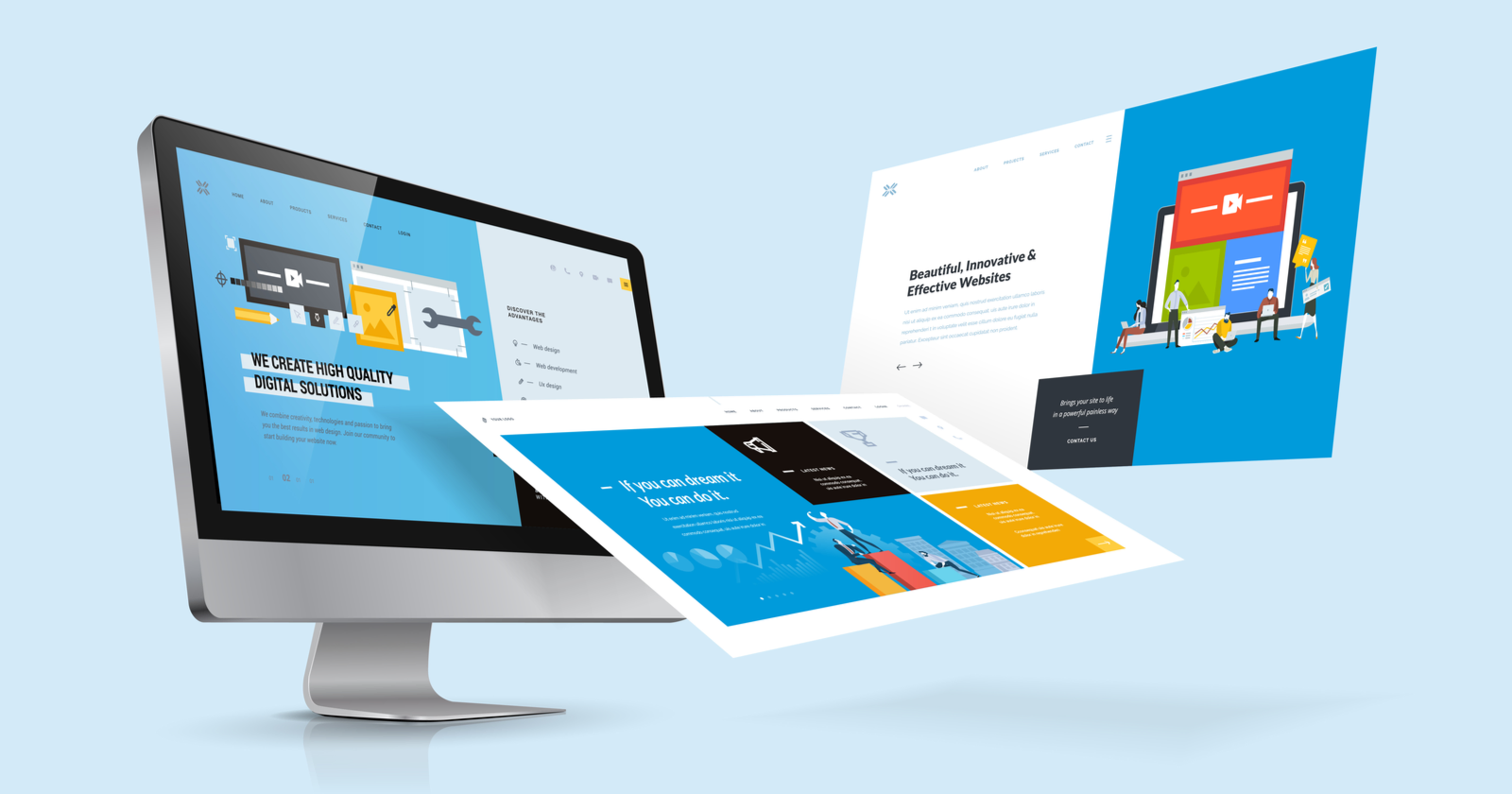The Comprehensive Guide to Crafting Aesthetically Appealing and Practical Internet Layout That Meets Customer Requirements
In today's digital landscape, the significance of crafting website design that are both practical and aesthetically enticing can not be overemphasized. By focusing on user-centered layout principles, designers can create experiences that not only bring in however likewise preserve user interest. Key visual elements such as balance, contrast, and placement play a vital duty in this procedure, while the necessity of responsive layout makes sure accessibility throughout numerous gadgets. The journey does not end with preliminary design; continuous screening and version are crucial for refinement. What methods can one employ to successfully stabilize these parts?
Understanding User-Centered Design
At the heart of efficient website design lies the concept of user-centered design, an approach that prioritizes the demands, choices, and actions of customers throughout the advancement process. This method entails extensive research to understand the target market, making sure that the end product reverberates with its intended individuals. By incorporating customer comments at every stage, developers can develop user interfaces that are not only aesthetically appealing but intuitive and additionally practical.
User-centered layout emphasizes empathy, requiring designers to step into the customers' shoes and consider their perspectives. Strategies such as user identities, journey mapping, and usability screening are used to determine pain points and opportunities for improvement. This repetitive procedure permits consistent refinement, as developers adjust to developing individual needs and technological developments.
Integrating user-centered design causes raised user contentment and involvement, eventually leading to higher conversion rates and brand name loyalty. It cultivates a joint atmosphere where stakeholders, consisting of individuals, programmers, and designers, interact to achieve a common vision. By placing users at the forefront of the style process, organizations can produce websites that not just satisfy service objectives however also offer satisfying and meaningful experiences for users.
Key Principles of Visual Style
Effective visual style acts as the foundation for producing easy to use and interesting websites. It incorporates a number of crucial principles that guide designers in crafting cosmetically pleasing and useful user interfaces.
First, equilibrium plays a crucial duty in accomplishing aesthetic harmony. Developers need to distribute aspects uniformly throughout the format to avoid frustrating users. This can be attained through in proportion or asymmetrical design techniques.
Following, contrast improves readability and draws attention to vital aspects. By utilizing varying shades, dimensions, or forms, developers can produce prime focus that guide users with the content.
Additionally, positioning is essential for organizing info. Consistent positioning of text and photos cultivates a tidy format, boosting total navigation and customer experience.
Proximity also adds to aesthetic clearness. Organizing relevant products with each other aids individuals in comprehending the partnership in between different components, making the user interface much more intuitive.
Last but not least, consistency in layout components, such as typefaces, colors, and styles, reinforces brand name identity and aids users browse the website much more effortlessly. By incorporating these key concepts of aesthetic style, web designers can create user interfaces that are not just aesthetically attractive however additionally useful and user-centered.
Value of Responsive Style
Responsive style is an important facet of modern internet development, ensuring that web sites work flawlessly throughout a range of devices and screen dimensions. As the web landscape evolves, the diversity of devicesâEUR" ranging from mobile phones to tablet computers and desktop computersâEUR" necessitates a design technique that suits all customers.
Applying receptive layout enables a flexible format that automatically adapts based on the individual's display measurements. This adaptability not only boosts access yet likewise enhances functionality, as individuals can connect and navigate with the website effortlessly, regardless of their tool.

In addition, responsive style minimizes the need for maintaining several versions of an internet site, simplifying updates and content monitoring. This performance equates into price financial savings and an extra natural brand experience across platforms.
Enhancing Customer Experience
User experience (UX) is an essential component of web design, affecting just how site visitors interact with a website and perceive its worth. A well-crafted UX guarantees that users can browse with ease, find information conveniently, and accomplish their objectives my review here effectively. The design needs to consider the user's journey, from the moment they arrive on the site to the completion of their wanted activity, whether that be buying, signing up for an e-newsletter, or accessing information.
Key aspects that boost UX include clear navigating, receptive designs, and engaging aesthetic web content. Consistency in design aspects such as colors, font styles, and switches promotes experience, making the internet site really feel cohesive. In addition, optimizing lots times is important; customers are much less likely to remain on a site that is sluggish to respond.

Examining and Iterating Designs
Checking and repeating styles are essential procedures that follow the Find Out More initial production of a website, guaranteeing that the customer experience remains at the center of any type of adjustments. These stages include collecting user responses, analyzing style efficiency, and making informed alterations to improve use and involvement.
Use testing allows designers to observe actual customers as they communicate with the site, identifying pain factors and locations for enhancement. Individual surveys can provide qualitative understandings, recording individual sentiments and choices.
As soon as testing is completed, the model stage begins. This includes refining the style based on the gathered information, focusing on modifications that straighten with customer demands and company goals. Continuous iteration fosters a flexible style method, where the web site develops in reaction to user actions and responses. By committing to rigorous screening and iteration, developers can develop a web site that not only meets aesthetic standards yet also supplies a enjoyable and seamless individual experience.

Final Thought
In conclusion, effective internet layout necessitates the assimilation of user-centered concepts, key aesthetic design elements, and responsive structures to create interesting user interfaces. By focusing on individual needs and carrying out constant screening and version, designers can fine-tune their productions to boost overall satisfaction. The commitment to these practices not just promotes a visually attractive visual but likewise makes certain capability across diverse tools, eventually contributing to a positive individual experience and enhanced interaction.
By prioritizing user-centered design principles, designers can produce experiences that not only bring in however likewise keep customer interest.At the heart of reliable web style exists the principle of user-centered layout, an approach that prioritizes the needs, preferences, and behaviors of customers throughout the development process. By placing users at the center of the design procedure, organizations can create web sites that not only meet business purposes but also offer fulfilling and purposeful experiences for customers.
By focusing on customer needs and preferences, internet developers can develop experiences that are not only visually appealing yet also functional, eventually promoting individual contentment and loyalty.
Individual surveys can offer qualitative insights, catching official source customer views and preferences.